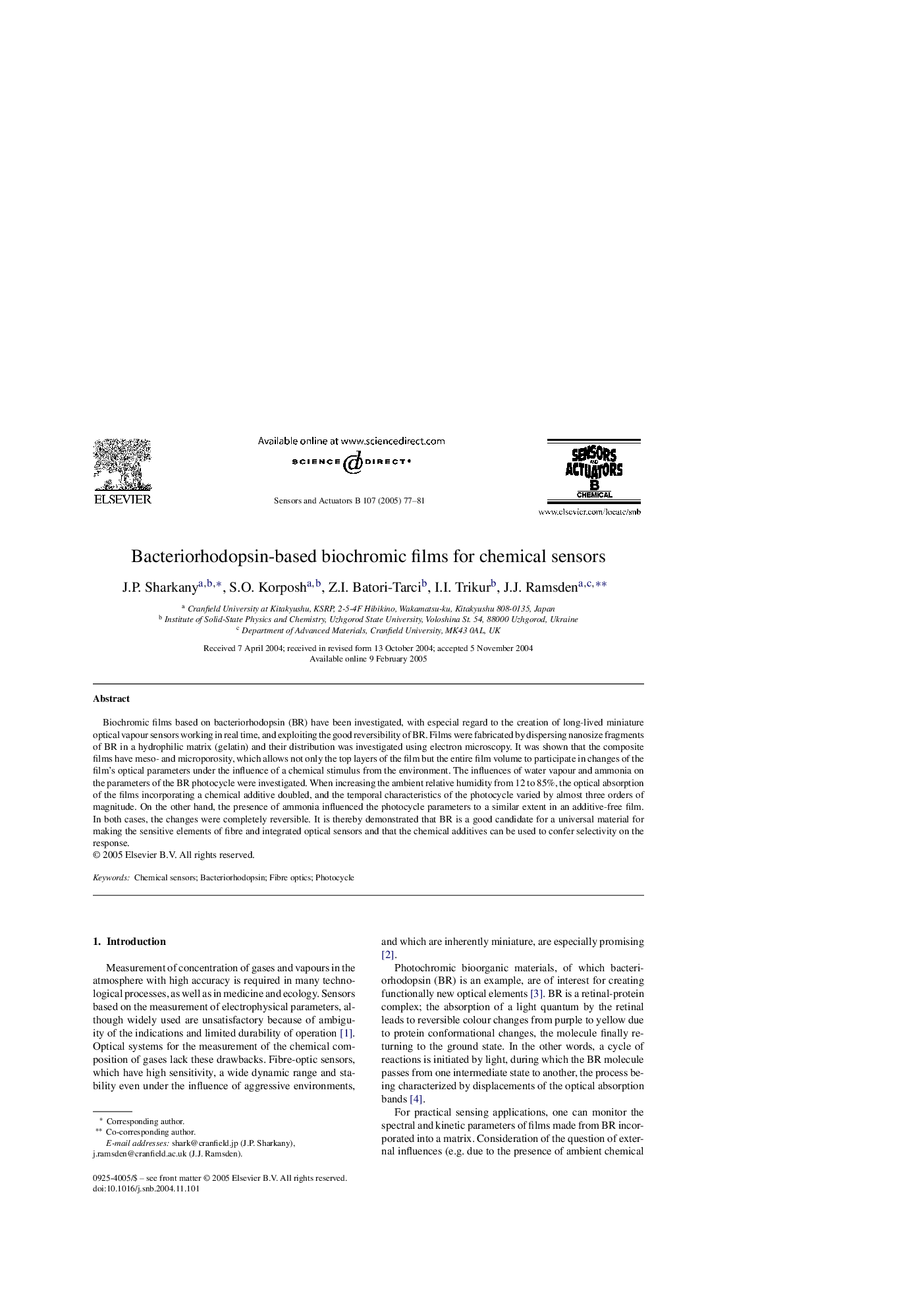| Article ID | Journal | Published Year | Pages | File Type |
|---|---|---|---|---|
| 10410327 | Sensors and Actuators B: Chemical | 2005 | 5 Pages |
Abstract
Biochromic films based on bacteriorhodopsin (BR) have been investigated, with especial regard to the creation of long-lived miniature optical vapour sensors working in real time, and exploiting the good reversibility of BR. Films were fabricated by dispersing nanosize fragments of BR in a hydrophilic matrix (gelatin) and their distribution was investigated using electron microscopy. It was shown that the composite films have meso- and microporosity, which allows not only the top layers of the film but the entire film volume to participate in changes of the film's optical parameters under the influence of a chemical stimulus from the environment. The influences of water vapour and ammonia on the parameters of the BR photocycle were investigated. When increasing the ambient relative humidity from 12 to 85%, the optical absorption of the films incorporating a chemical additive doubled, and the temporal characteristics of the photocycle varied by almost three orders of magnitude. On the other hand, the presence of ammonia influenced the photocycle parameters to a similar extent in an additive-free film. In both cases, the changes were completely reversible. It is thereby demonstrated that BR is a good candidate for a universal material for making the sensitive elements of fibre and integrated optical sensors and that the chemical additives can be used to confer selectivity on the response.
Related Topics
Physical Sciences and Engineering
Chemistry
Analytical Chemistry
Authors
J.P. Sharkany, S.O. Korposh, Z.I. Batori-Tarci, I.I. Trikur, J.J. Ramsden,
